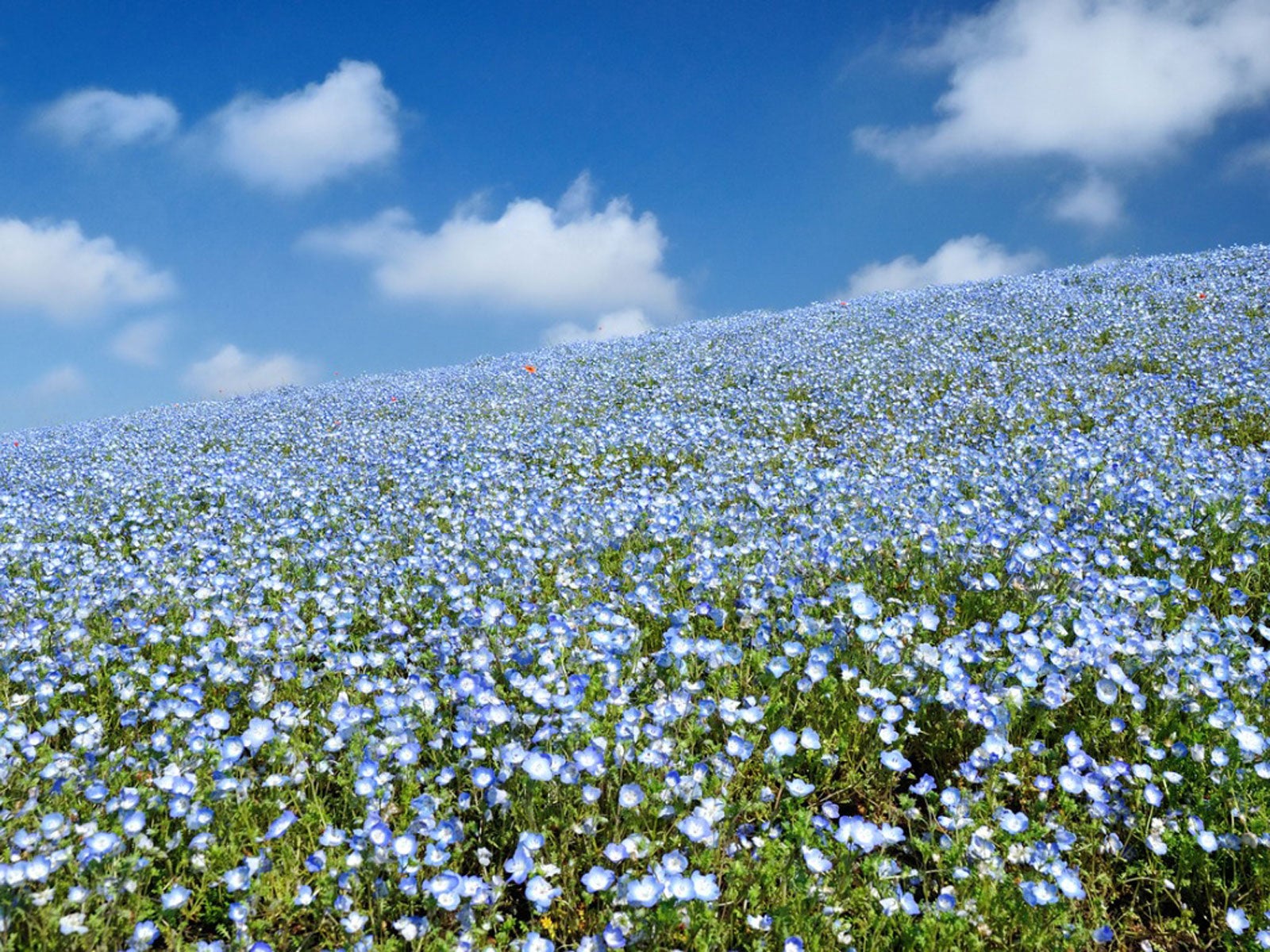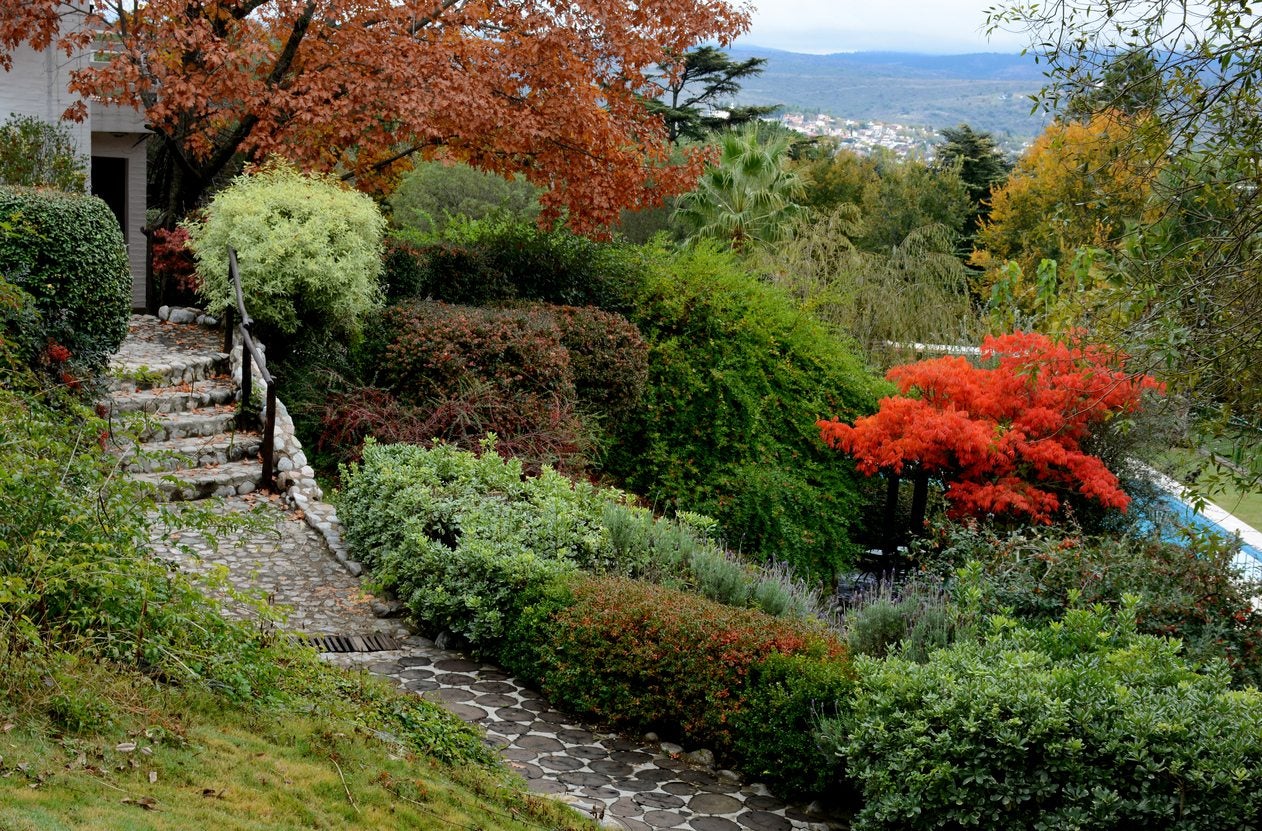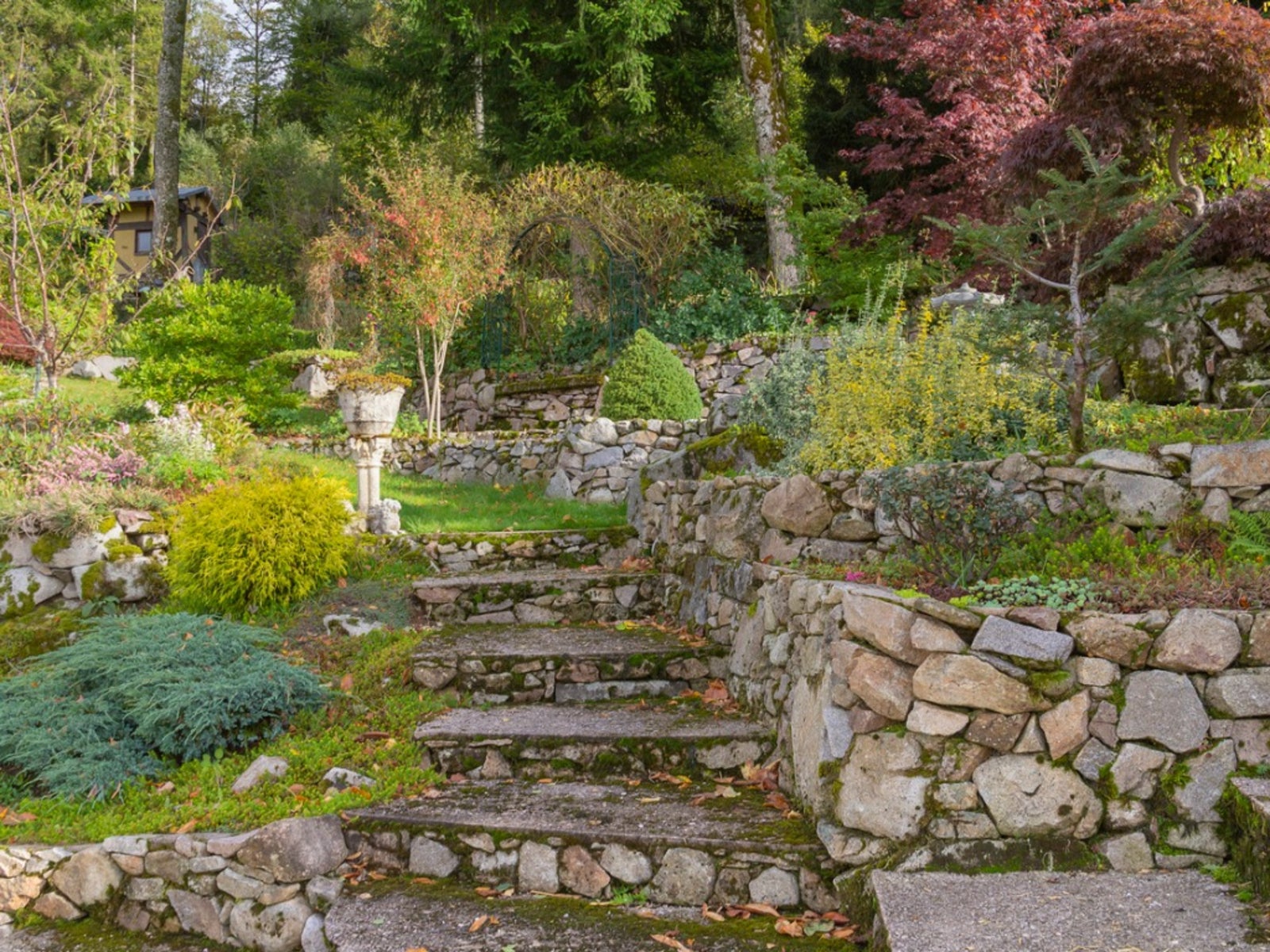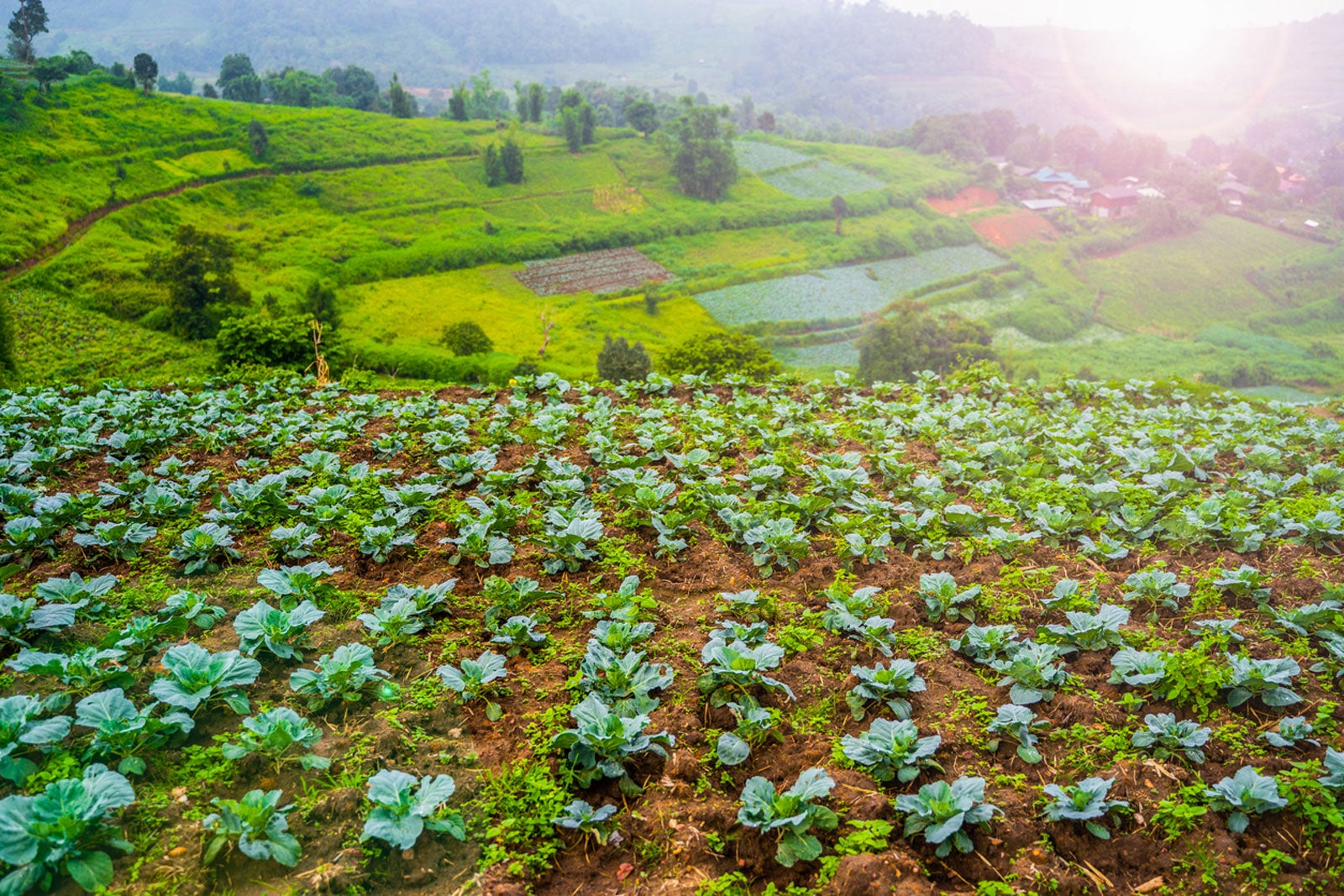Ground Cover Plants For Hillside Gardens


Steep hills in the landscape have always been a problem. Grass, with its net-like root system to hold soil in place, might seem to be the way to go, but anyone who has mowed lawn on a hillside knows it's no picnic and can be downright dangerous. Then there are those steep banks where nothing seems to grow naturally. They can be an eyesore and a menace to erosion control. Hillside plants can be the solution to myriad problems. There are many suitable ground cover plants for hillside use. Steep hill ground cover can take the form of dense shrubs with deep roots for a forest look, to fast-growing ground covers for a sunny hill. When choosing ground cover for a hill, you need to use the same criteria as you do for flat land: sun, water and maintenance. The following lists should help you in choosing ground cover for a hill. It should be noted that most of the following plants are evergreen and many are considered invasive.
Ground Cover Plants for a Hillside
English Ivy - A favorite steep hill ground cover, this woody vine will root wherever it touches. Slow to start, once established it will quickly cover ground and choke out weeds. Variegated Goutweed - grows about 6 inches (15 cm.) high and provides great coverage for large areas. Periwinkle or Vinca Minor - a trailing evergreen plant with blue/purple flowers inspiring, this is one of the best ground cover plants for hillside gardening. Dense enough to suppress weeds, it's still loose enough to be interspersed with daffodils and crocus for a spectacular springtime display. Dead Nettle - a fast growing ground cover for sunny hill or shady bank. Once this green and white beauty is established, it will thrive under the most adverse conditions.
Shrubs for Steep Hill Ground Cover
Bearberry - native to the northwest but can be found in many garden centers throughout the country. It's a low spreading evergreen with pinkish white flowers in spring followed by reddish berries that birds love. Euonymus - several prostrate varieties that are suitable ground cover for a hill. Colors range from deep green to golden and their runners root easily wherever they touch the soil. These delightful shrubs can handle shade as well. Cotoneaster - a fast growing evergreen that lives for years and requires little care. Each bush can cover a six foot (1.8 m.) circle in just a few years. Junipers - several low growing varieties that make great ground cover for a hill. Planted closely, they'll form a dense mat in a couple of years. Roses - several low spreading varieties out there as well as ever-blooming shrub roses. Low maintenance and virtually pest free, these gems can make a real color statement when clustered together and should be considered as fast growing ground covers for sunny hillsides. Whether you're looking strictly for visual appeal or for erosion control, hillside plants don't need to be confined to difficult to maintain grass or weedy confusion. With a little planning, ground cover for a hill can create an appealing garden scene that will bring pleasure to both the gardener and passersby.
Gardening tips, videos, info and more delivered right to your inbox!
Sign up for the Gardening Know How newsletter today and receive a free copy of our e-book "How to Grow Delicious Tomatoes".

Jackie Rhoades began writing for Gardening Know How in 2010.
-
 How To Make A Bouquet Garni Or Herb Bundle For Cooking
How To Make A Bouquet Garni Or Herb Bundle For CookingIf you’re a great cook, you may have made an herb bundle before. If this is a new idea, learn how to add sparkle and interest to your dish with a bouquet garni.
By Amy Grant
-
 ‘Coral Charm’ Peony Care For Sublime Semi-Double Peonies With Lush Salmon Pink Flowers
‘Coral Charm’ Peony Care For Sublime Semi-Double Peonies With Lush Salmon Pink FlowersPeonies are known for their soft baby pink or magenta tones, but if plushy coral blooms are your thing, here’s our guide to the ultimate ‘Coral Charm’ peony care
By Tonya Barnett
-
 Sloped Rain Garden Alternatives: Planting A Rain Garden On A Hill
Sloped Rain Garden Alternatives: Planting A Rain Garden On A HillWhen planning a rain garden, it’s important to determine whether or not it is a good fit for your landscape. In the case of a hill or steep slope, a rain garden may not be the ideal solution. Click here to learn more.
By Susan Albert
-
 Choosing Plants For Sloping Areas – What Plants Grow On Slopes
Choosing Plants For Sloping Areas – What Plants Grow On SlopesOnce you know what plants grow on slopes, you can use this knowledge to your benefit and plan a garden that both thrives and helps stabilize the hillside. Click here for ideas on choosing plants for sloping areas and how to maximize this difficult planting terrain.
By Bonnie L. Grant
-
 Tips For Watering On A Hillside Garden
Tips For Watering On A Hillside GardenThe biggest problem with irrigating a hill is having all the water run off before it has a chance to soak into the ground. Controlling this runoff is important. Read here to learn more.
By Nikki Tilley
-
 Growing A Vegetable Garden On A Hillside
Growing A Vegetable Garden On A HillsideAlthough most people would prefer a nice, level vegetable garden, this isn't always an option. For some of us, slopes and hillsides are a natural part of the landscape. Learn how to grow vegetables on a hillside here.
By Nikki Tilley